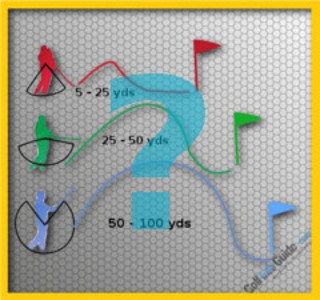
1. How Can I Improve Inside The Scoring Zone?
The scoring zone is the area from inside 100 yards which involves pitching, chipping, bunkers, putting and other specialized short game shots. It is incredibly important because being successful inside the scoring zone will help players shoot much better numbers. However, to be successful, golfers need to cultivate a number of successful techniques and there are no shortcuts. Firstly, golfers need to practice their pitching technique to not only hit high, normal and low pitches but also work on their swing length to control distance. Distance control on pitching is vital to successful shots.
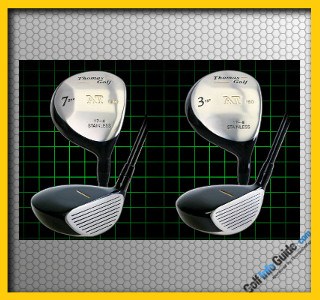
2. How Many Fairway Woods Should I Have In My Bag?
Every golfer is different and therefore there is not a specific answer/rule that tells you how many fairway woods an individual should have. It is important to have a club make up that suits your game. For example, if you are a lower handicap golfer that hits the ball a long way with no issues hitting long irons then you generally would not have as many fairway woods as someone with a higher handicap. This will be because the higher handicap golfer may not hit the ball very far, and will struggle to hit long irons and will therefore need some help by having more fairway woods in the bag. As you are only allowed 14 golf clubs in your golf bag when playing, you will need to replace some of your long irons if you are adding a variety of fairway woods to your bag.
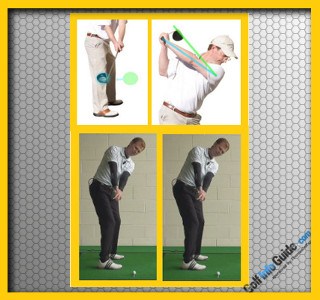
3. Will making a flat swing cure my slice?
As bad as slicing is, there are at least two maladies that make it seem benign by comparison: shanking, and hooking. Both can be caused by a swing thats too “flat.” In this context, “flat” describes a swing plane in which the golfers left (lead) arm, at the top of the backswing, is at less than a 45° angle relative to the ground. Matt Kuchars swing offers a great illustration. In fact, a flat swing plane does have its advantages. For starters, it can help cure a slice. Because the arms and club move more around the body, a flat swing promotes an inside-to-outside clubhead path – the opposite of the outside-in or over-the-top move which plagues many slicers. Swinging inside-out enables you to hit a draw and transfer more power to the ball, two highly desirable traits.
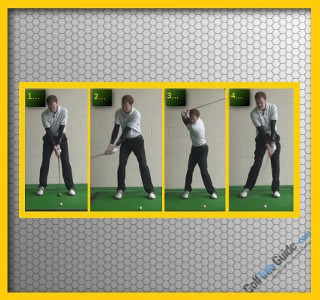
4. Should I Feel Like I Lift The Golf Club During The Back Swing?
When you make your back swing, the height of the golf club increases. The club head starts on the ground and at the end of your back swing, it has become as high as your head height. The handle of the club begins the swing from around thigh height and at the end of your back swing it has become as high as your head. The golf club as you swing back away from the golf ball becomes much higher than it started. This increase in height can be misinterpreted by many golfers with how to achieve it and these golfers get the club into position on their back swing by lifting it there with their arms. This is incorrect and if you are swinging the club correctly you should not feel like you are lifting the club up at all.
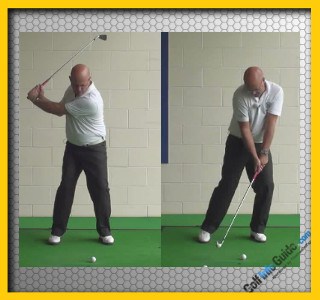
5. What Does Stack And Tilt Mean Should I Be Using It In My Golf Game?
A “Stack and Tilt” golf swing is a mechanically simpler method of hitting a golf ball but it contradicts some of the more conventional elements of a traditional golf swing, namely weight shift and lateral movement. Interest increased in the stack and tilt method as it allows the golfer using it to hit the ball straighter but still with maximum distance. In a stack and tilt golf swing, the golfer stacks their weight on their front foot throughout the swing. There is no weight shift on to the back foot during the back swing and then on to the front foot during the down swing, through impact and then into the follow through. As the golfers weight remains stacked on the front foot during the swing, they tilt forward to keep their spine and shoulders over the golf ball.
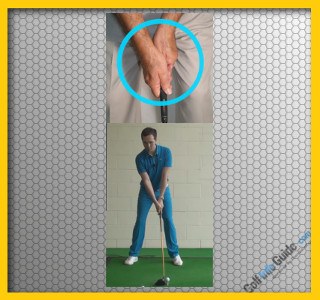
6. What Is The Best Grip For Straight Golf Drives?
The grip is very similar to the golf swing in the respect of it being individual to the player but generally a neutral grip does what it is supposed to and helps keep the club face square to the target at impact. The rotation of the hands from the midpoint of the down swing to the midpoint of the follow through should result in the club face pointing at the target at impact. Some golfers may actually feel a stronger grip or a weaker grip helps their game in terms of keeping the club straight through the golf swing and being square at impact. As a generic rule, try to keep the grip neutral and then work on other aspects of your swing to try and neutralize any other faults.
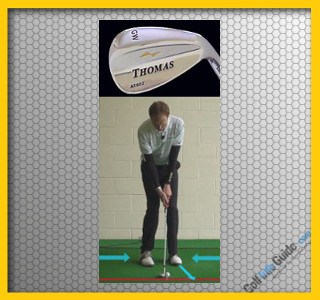
7. What Is The Perfect Golf Grip For Clean, Crisp Golf Wedge Shots?
When it comes to hitting clean, crisp wedge shots, the way you position your hands on the grips is no different to a full swing with the Vs created by the thumbs pointing towards the rear shoulder. Applying a neutral grip allows us to hinge and set the club in the correct manner during the swing whilst also aiding in keeping the club face neutral. When hitting wedge shots, distance control is imperative in order to hit the ball close to the desired target. A good way to adjust distance control is to move your hands up and down the grip whilst still keeping the relationship between the hands the same. As the hands move lower down the grip, you will hit the ball a shorter distance due to a reduction in club speed.
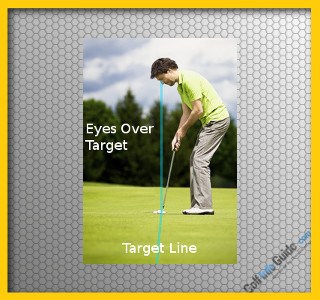
8. Where Should My Eyes Be In Relation To The Golf Ball When I Am Putting?
The position of your eyes at address in relation to the ball is crucial. Not only does it give you the ideal view of the line you wish to start your putt on, but also that you should be standing the correct distance away from the ball at address, assuming your weight is over the laces of your shoes and not back on your heels or forward over your toes. This will now see you more importantly with your eyes looking down directly above your aim line.If your eyes are not looking down on your aim line you are sure to mis-align your putter. This will lead to you missing more putts than you hole because your mind can’t correctly align you if your view is constantly changing.
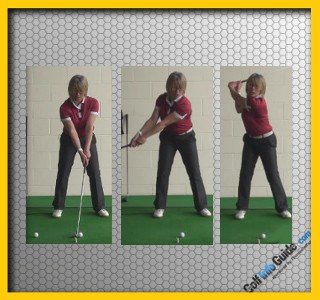
9. Where Should The Toe Of The Club Point Half Way Back On My Golf Back Swing?
As you make your back swing, your upper body rotates and your wrists set as you swing the golf club into the correct position. When you are half way back on your back swing, your shoulders are 45 degrees rotated to the right (for right handed golfers), with your left arm extended and hands at chest high. Your wrists will have hinged so that you have created a 90 degree angle, or an L shape, between the shaft of the golf club and your left arm. In this position, the shaft of the golf club will be angled so that following it downwards, an extension of the shaft angle would hit the target line. The club face will be slightly upwards to the sky and the toe of the club face will be the highest part of the club and pointing upwards.
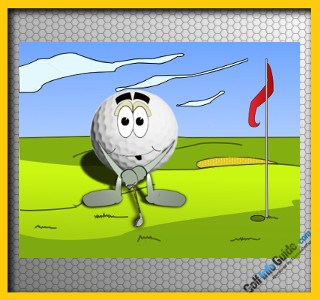
10. How can I play well for all 18 holes?
You finish off another round of golf with an unsatisfying score. Yet you feel as though you played pretty well. Reflecting on the day, you realize that half your strokes over par came on just a handful of holes. Maybe they happened early or late in the round, or perhaps they were spread across the scorecard. You exit the 19th hole muttering, “Why cant I play well for all 18 holes?” Start by practicing at least once between rounds. If you play every weekend, find time to hit the range and practice green on a weekday. If youre on a two-rounds-per-month schedule, practice on your off weekend. This will keep your swing, stroke and touch honed, and youll avoid that havent-swung-a-club-in-months feeling.





